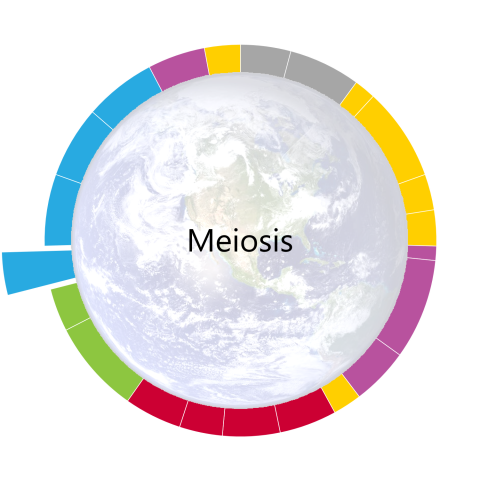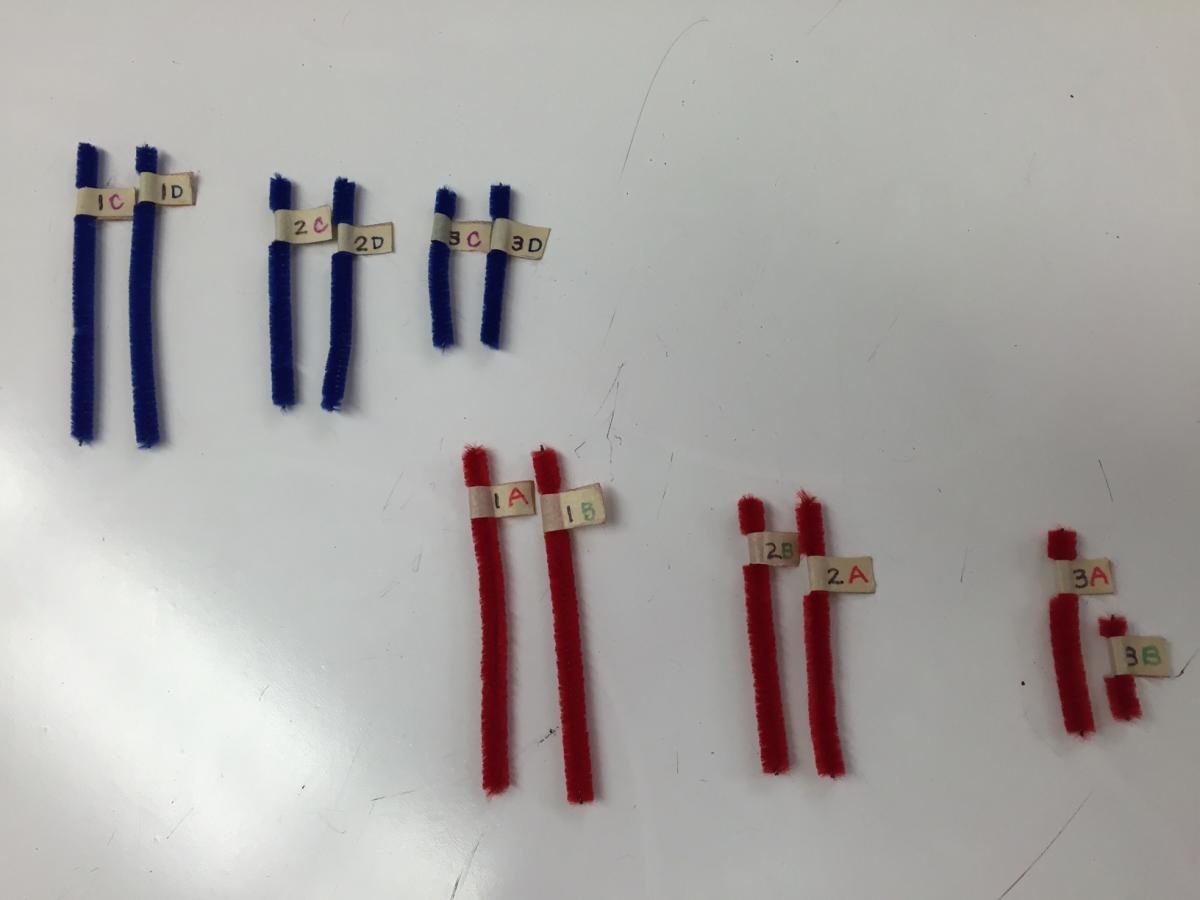
Phenomenon
Sometimes family members resemble each other, sometimes they don't. This is particularly interesting in the case of biological siblings, who get their DNA from the same two parents.
Question
Why are siblings sometimes so much alike and other times so different? How is parental DNA distributed to offspring?
Model Ideas
- Sexually reproducing organisms have two chromosomes of each type, one from each parent.
- Parents contribute one chromosome of each pair to each offspring.
- Which chromosome is given from a pair is random.
- Traits are usually inherited independently from one other
- The number of possible chromosome combinations is 2n (n = # of homologous pairs for that species). In humans: 223 = >8 million possible combinations.
- Crossing over further increases variation.
Overview
Transition in: We know that offspring resemble their parents, but we are wondering how that works.
The phenomenon that motivates this model is the “Black and White Twins” —two girls that look very different and claim to be twin sisters. Is this possible? After presenting the phenomenon students will engage with the pipe cleaner activity where they reason how many chromosomes each parent must give to their offspring in order for the offspring to have the correct number of chromosomes. Students will work to explain the reason offspring have information from both parents and share some of that information with siblings. The approach stresses the underlying importance of the process – the need to make sex cells that contain half the information of a fertilized egg (23 chromosomes compared to 46) and that there must be one chromosome from each pair to have a complete set of information after fertilization.
Transition out: Now that we understand how the information is passed and distributed from parents to offspring, we wonder how that information controls our traits?
Advanced Planning
Make one Meiosis kits per group for "Baby Making" activity.
